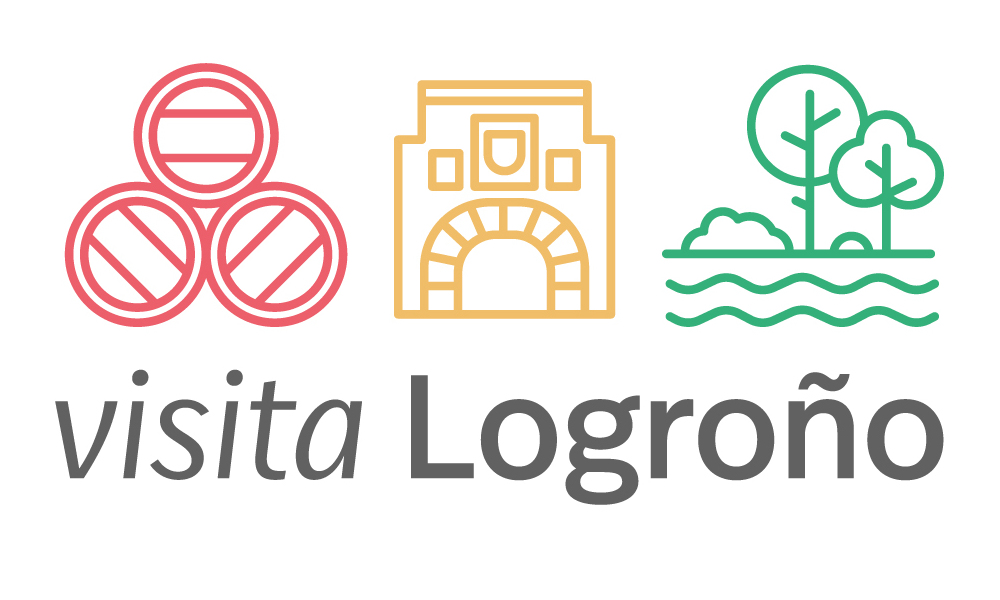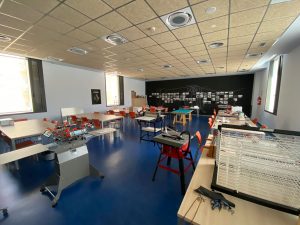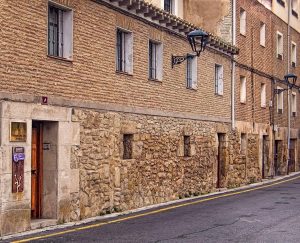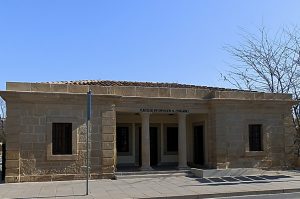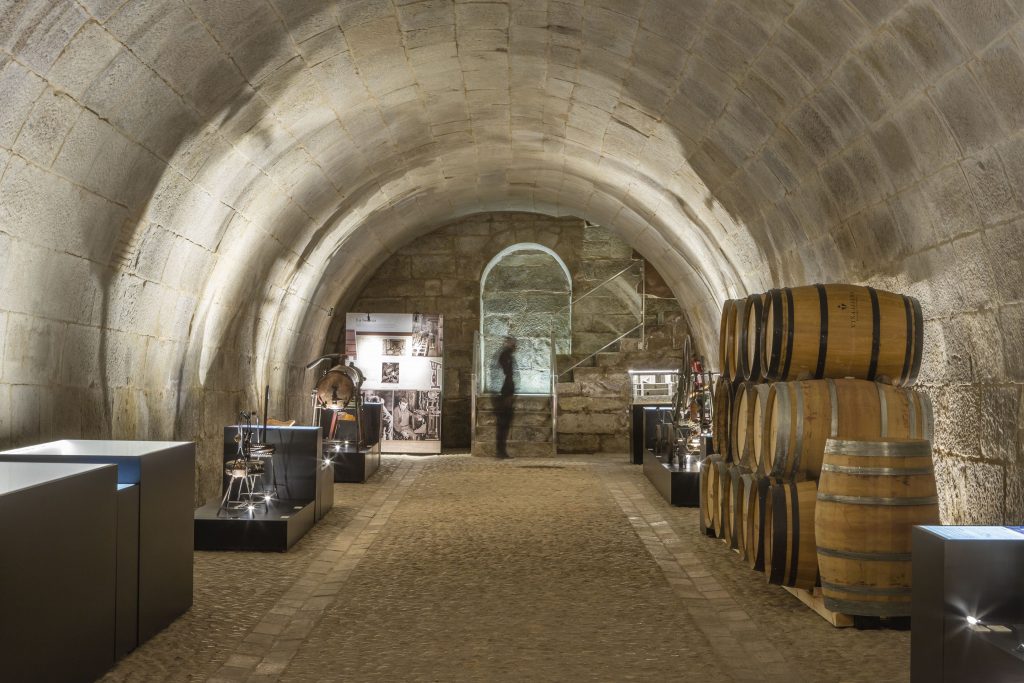
The exhibition shows the history of Ruavieja Street, both for being one of the main routes for pilgrims passing through Logroño and for its important role in the development of the city thanks to the wine production that took place there.
From the Puente de Piedra, this street has been the obligatory route for pilgrims on their way to Santiago de Compostela, who passed over the wine-making areas that have been located under the city’s cobblestones since medieval times.
This exhibition represents the history of a street that is pilgrimage and wine at the same time, the axis of the hospitality that Logroño has always offered to the pilgrimage to Santiago de Compostela.
Logroño’s winemaking history is born and hidden in the cellars of Ruavieja and the area around it.
Therefore, the aim of this exhibition is to show the relationships that the Camino de Santiago has with the city of Logroño through the wine activities in two emblematic spaces such as the Espacio Lagares and the Calado de San Gregorio, which connect two other extremely important places in a singular route, such as the Cubo del Revellín and the Yacimiento de Valbuena.
The Calado de San Gregorio is the starting point of the exhibition ‘El Camino del Vino’, focused on the relationship between the Camino de Santiago and wine, and the particular incidence of both in the history of the city.
Here, the exhibition is subdivided into three areas corresponding to the three floors of the structure. On the ground floor, under the title ‘El Camino de Santiago’, acts as a reception area and meeting point from which the visit to the two exhibition venues is organised.
Under the name ‘La calle del vino’, floor -1 is dedicated to the historical and ethnographic aspects of Ruavieja Street, the oldest street in Logroño and the first in which white, claret and red wines were produced.
On floor 2, under the title ‘La Bodega’, one of the great attractions of the exhibition is the 17th century fretwork. An area showing the evolution of wine storage spaces up to the present day, explaining the use, purpose and evolution of wine cellars, as well as the transformation of wine containers.
In front of the Calado de San Gregorio, in the Espacio Lagares, the educational tour continues, in which the use and purpose of the preserved archaeological remains are mainly shown.
Thus, on the ground floor, which serves as the entrance to the premises, a number of archaeological remains related to wine culture (tanks and wine presses, press bases, etc.) are on display. The use and purpose of the archaeological remains preserved thanks to the rehabilitation of the site are explained here.
These are important remains insofar as they are one of the few examples of 17th century wine presses that have been preserved in the old part of the city.
In order for visitors to understand what these structures were used for and how people worked in them, the exhibition space is subdivided into several thematic areas.
This way, visitors will be able to find out what a winepress is and how it has evolved from ancient times to the present day; discover what a cave winepress is; or learn about the use and purpose of the archaeological remains found in the Espacio Lagares (what the three existing winepresses were used for, the type of presses used to obtain the final wine, etc.).
Pieces loaned by the Vivanco Museum, Caja Rioja Foundation and Bodegas de Logroño for the exhibition.
The Vivanco Museum has loaned a total of 24 pieces to Logroño City Council for the permanent exhibition ‘El Camino del Vino’. These include several iron and wooden banasta presses, corking machines, demijohns, pumps, racking bellows, funnels, metal measures, racking rods, and a sugar press, among other metal, copper, clay and basket pieces.
The Caja Rioja Foundation has donated three watercolour drawings and two models and Bodegas de Logroño have donated the barrels that can be seen in the exhibition.
SUMMER TIMETABLE
Winter opening hours (until March 31st):
Monday and Tuesday: CLOSED
From Wednesday to Saturday: 10:00 a.m. – 1:30 p.m. / 5:00 p.m. – 7:00 p.m.
Sunday: 10:00 a.m. – 1:00 p.m.
Summer opening hours (until October 31st):
From Monday to Sunday: 10:00AM – 2:00PM / 4:00PM – 8:00PM
Special opening hours on Bridges and holidays.
For further information: Phone: +34 941 277 827
